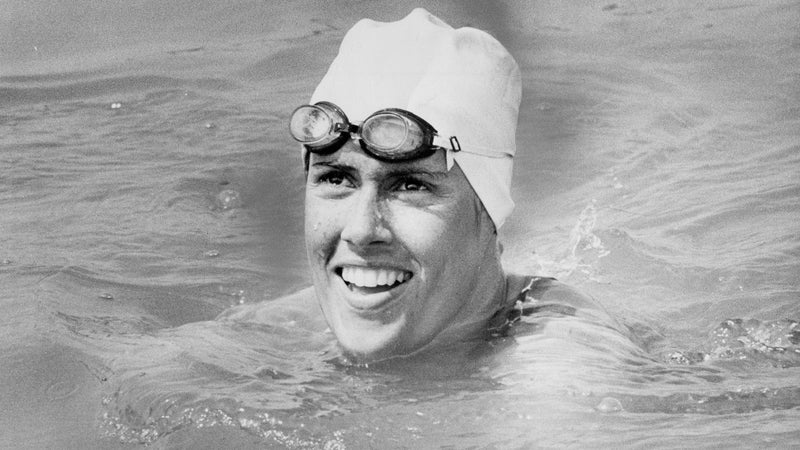I’ve been covering sexual-abuse scandals in swimming for the past seven years, and you could have knocked me off a diving board when the sentencing of Larry Nassar, the perverted osteopath who worked for USA Gymnastics, finally led to some organizational accountability. Nassar will be in prison for his exam-table molestation of more than 150 girls and young women. And public opinion quickly sent USA Gymnastics’ entire board of directors, as well as the president and athletic director of Michigan State University, where Nassar worked, into disgraced retirement.
In Nassar’s wake, the House of Representatives , previously approved by the Senate, that compels national governing bodies (NGBs) like USA Gymnastics and USA Swimming to report all allegations of sexual misconduct to police. (Previously, these groups had broad discretion to exercise internal remedies and weren’t required to inform the authorities.) While I applaud this first step, I’m even more intrigued by another development. The bipartisan leadership of the House Energy and Commerce Committee has announced public hearings to fully air reports of the horrors that have occurred inside USA Gymnastics, along with USA Swimming and USA Taekwondo.
Anyone tempted to conclude that jailing Larry Nassar and tweaking a few rules solves the problem needs a history lesson.
After watching formerly indifferent news commentators become livid about sexual abuse—moved by the courage of and her fellow gymnasts—I see the value of comprehensive hearings. Only with gavel-to-gavel media coverage, in which the stories of abuse and the callous disregard for victims are presented in all their emotional detail, can we fully appreciate the broad culpability for our ugly youth-sports culture. While guilt starts with the perpetrators themselves, it’s shared by the profit-centric organizations sanctioned by the United States Olympic Committee (USOC), television networks, spectators, and even parents. Millions of us watch and cheer these entertainment spectacles, with little recognition of a dark side whose reckoning we can no longer avoid.
Meanwhile, anyone tempted to conclude that jailing Nassar, lopping off some heads, and tweaking a few rules solves the problem needs a history lesson. Comparable abuses have been perpetrated in swimming for decades, but for whatever reason they haven’t captured the public’s attention or led to sufficient reforms. We must seize this moment of heightened awareness to demand a thorough makeover of sporting organizations.
Age-group swimming, a staple of American life, involves some 350,000 kids and 12,000 coaches. Over the past three decades, the sport has been marred by at least 100 instances of sexual misconduct committed by scores of coaches. Among the most extreme examples is Andy King, who slipped through USA Swimming’s then weak background-check system and moved into coaching jobs in California and Washington State despite clear evidence that he was an abuser. King was sent to prison for life in 2009 for crimes that included impregnating a 14-year-old.
For years, open-water legend Diana Nyad has claimed that, as a teenager, she was molested by Jack Nelson, her swimming coach at a school in Fort Lauderdale, Florida. Nelson, who died in 2014, later directed a USA Swimming age-group program out of the nearby International Swimming Hall of Fame complex—and Nelson himself was later inducted into the Hall of Fame.

In 2004, one of Nelson’s assistants at the club, , was investigated by the Fort Lauderdale police for allegedly battering a young Mexican swimmer. The police and USA Swimming didn’t pursue complaints by the swimmer, who said he’d been brought to the U.S. under Pussieldi’s care and alleged that the coach had installed one or more hidden cameras in his house to spy on the athletes he boarded. Police dropped the case, citing insufficient evidence. Pussieldi left Nelson’s swim club but was allowed to continue coaching in South Florida for another decade. Today he’s a swimming contributor for a sports TV station in his native Brazil.
Other powerful swimming officials did nothing upon learning about Pussieldi and those like him. In a later civil suit involving a coach named Brian Hindson, who used a secret videotaping system to watch girls disrobe in an Indiana locker room, USA Swimming’s longtime executive director, Chuck Wielgus, blithely testified that he hadn’t heard anything at all about videotapes at the time of the Hindson allegations—even though USA Swimming had already conducted an investigation into Pussieldi and had been alerted by the FBI about its hunt for another coach suspected of using a camera to watch athletes.
In 2010, following nationally televised investigative reports about swimming’s abuse problem, Wielgus set up the SafeSport program, which, among other things, involved publishing a list of coaches who were banned from swimming because of accusations about sexual abuse and several other types of conduct violation.
Unfortunately, this didn’t do enough to improve USA Swimming’s overall treatment of abuse victims. Familiar excuses of insufficient evidence and lack of jurisdiction continued to keep accused abusers on pool decks and victims, some of whom had already been deeply traumatized by their experiences, frustrated. It took a 2014 public petition to force Wielgus to withdraw from his own scheduled Hall of Fame induction. Still, he remained in a job that earned him $900,000 per year until his death in April 2017.
This is why many of us who follow these issues demand that legislators make structural changes to the Amateur Sports Act, the 1978 law that established the USOC. Currently the USOC sanctions a patchwork of NGBs with the primary functions of developing medal talent and attracting corporate sponsorships. SafeSport departments claiming to protect young athletes are, in my opinion, often glued-on and toothless.
We can do much better. European countries enshrine athletic values in government sports ministries. Establishing a similar body in the U.S. would be extremely difficult, and there’s no guarantee that it would make more than a dent in our insidious abuse problem. But at the very least we can enact a “ministry lite” approach that grants departments tasked with protecting young athletes statutory jurisdiction over the policing of YMCAs, high school and college programs, and anywhere else youth are at risk. Enough with the charade of coaches who move in and out of USA Swimming membership and the organization’s excuses about the limits of its power.
In her testimony, gold-medal gymnast Aly Raisman tapped into a mood to blow up the whole USOC edifice. We won’t go that far—but post-Nassar, settling for minor reforms is no longer acceptable.
Irvin Muchnick () writes about abuse in amateur sports, along with other issues, for his website Concussion Inc.
Matt Chase is an ���ϳԹ��� contributing artist.


